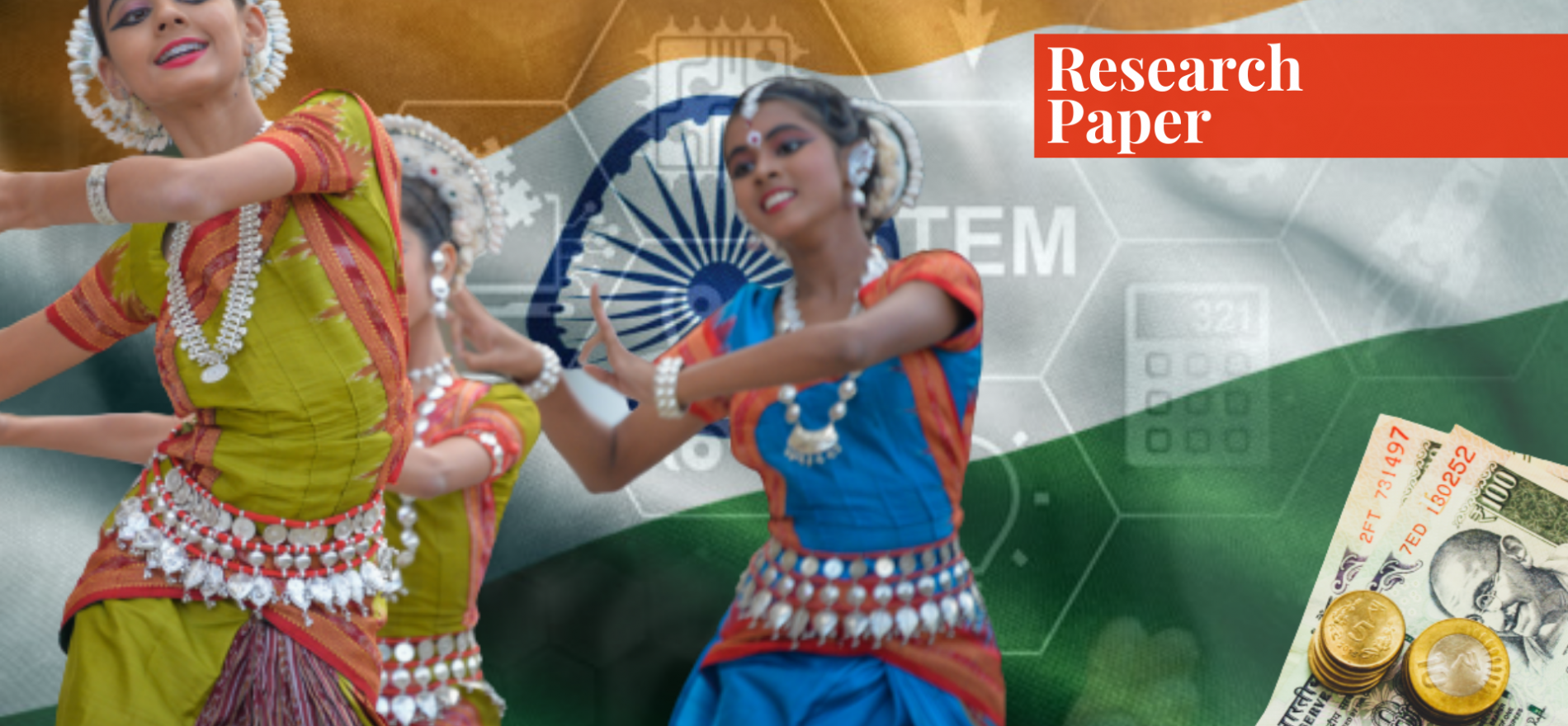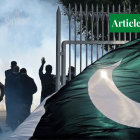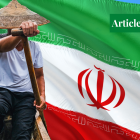An aspirant researcher, with an interest in international politics, global powers competition, diplomacy and foreign policy, Hira Akram is a student of International Relations at National Defence University. She is currently enrolled in the 7th semester of her bachelor's degree. She has interned at the UNDP.
Introduction
The significance of soft power has increased in contemporary power politics. Power is considered as the ability to influence others; hard power is associated with coercion, while the soft power of a state depicts its ability to persuade others. The term ‘‘soft power” was coined by Joseph Nye when he described this process as persuading others “to want the outcomes that you want” instead of coercing or ordering others to do something.1
A country’s culture, foreign policy, and political values contribute to the soft power projection of a state. A new concept of smart power, which is a combination of both hard and soft power approaches applied to diplomacy, has also emerged.
Reliance over only one form of power is not adequate so smart power implies the use of different tactics and tools to achieve diplomatic and political goals. In 2009, American Secretary of State Hillary Clinton declared that with the effective utilization of tools of smart power, diplomacy would be the “vanguard of American foreign policy”.2
Public Diplomacy
Diplomacy is defined as the practice of institutionalized communication among representatives of internationally recognized entities to produce, manage, and reproduce public goods.3 This art of communication and negotiation has evolved over time. Initially, the traditional diplomatic practices involved only state-to-state interactions but with time new concepts emerged and public diplomacy is one of them.
In traditional diplomacy, the main aim is to exert influence on foreign governments but in public diplomacy, the main target is to influence the foreign citizens, who would then indirectly influence their own country’s policies. The term of public diplomacy was coined in 1965 by a retired American diplomat, Edmund Gullion. This term was used as an alternative for the term ”propaganda” which aimed to change the public perception or opinion.
The term ”public diplomacy” was popularized in America due to the positive connotation associated with it and it just rebranded the term of propaganda. In public diplomacy, the state representatives try to engage with the foreign public to lure them and influence their perception regarding one’s own country as well as to promote one’s own interests and values.
During Cold War, the United States successfully used this type of diplomacy to counter the communist influence by manipulating foreign public perception. The Americans were able to attract the foreign public through its culture portrayed by its media industry. The success of American public diplomacy in the Cold War provided an impetus to this approach and it was adopted by other states.
Nation Branding
Public diplomacy is also associated with terms like ”branding” which focuses on the creation of a strong and positive perception of a state. Nation branding refers to the application of branding and marketing-communication techniques to enhance the image of a nation or state.4
The government uses its resources to project a positive image as well as to alter the perception associated with a nation in a positive way. It can also be described as the ”strategic self-presentation” of a country with the aim to promote its economic and political interests. Some concepts of branding can be used in public diplomacy, for instance, the foreign public is considered as the ”target audience” and the state representative act as the ”brand ambassador”.
The main aim of both branding and public diplomacy is the same, that is, to present a positive picture of the nation. The unique character of a nation is portrayed in order to attract the audience through its uniqueness. Simon Anholt considered public diplomacy as a part of nation branding.5
Peter Van Ham has given the concept that nation branding can come under the domain of constructivism as through these branding techniques a nation tries to construct its positive image and identity in front of the world.6
Initiatives by India
The Indian government has taken different initiatives during the last two decades to improve its image and status in front of the international community. One of India’s significant initiatives was the formation of the Public Diplomacy Division in the Ministry of External Affairs in 2006. The sole purpose of this division was to improve the image of India in the world. This division is involved in producing documentaries on India, in a number of different South Asian languages.
Similarly, Indian Cultural Centers were established in different countries across the world; thirty-six cultural centers have been established with the basic aim to ”project the soft power of India” through arranging various activities e.g. cultural festivals, cultural performances, seminars, and workshops.7
The role of the Indian Council of Cultural Relations is also significant in this regard. Not only does it oversee the cultural diplomacy of India but it also finances different student exchange programs. Students from Afghanistan and African countries are prioritized for such scholarships in order to build a soft image in those countries.
Although India doesn’t have any influential state-run international news channel, the External Services of All India Radio is trying to fill that vacuum. It broadcasts its transmissions in 27 languages (including Arabic, Balochi, Burmese, Chinese, Nepali, Pashtu, Persian) across 100 countries.
India is using the initiative of the Pan-African e-network to project its soft power in African states. India does have economic and political aims behind this collaboration as it would not only increase its sphere of influence but would also give access to the natural resources present in those areas, which is essential for Indian economic growth.
To shape the foreign public opinion more favorable towards India, different exhibitions have been held. The ”India Everywhere” campaign was held at Davos Summit 2006 where the elements of Indian culture, e.g. Hindi songs, traditional dresses, were presented at the global level. The Davos Summit successfully portrayed cultural diversity as well as attracted foreign investors.
In recent times India has effectively utilized social media platforms for diplomatic purposes. The social media apps have provided the policymakers to actively engage with the both domestic and foreign public.8
Appraisal of Indian Initiatives
Through the effective use of public diplomacy, India has been able to mask the domestic political and social issues by portraying an image of a secular, democratic, and culturally diverse country. The initiatives aim to wipe away or mitigate the negativity associated with India due to the presence of domestic issues like inter-sectarian and inter-communal violence, poverty, human rights violations in Indian Administered Kashmir. According to the 2018 UN Human Development Index, India is ranked 129th among 189 countries.9
According to the Oxford Poverty & Human Development Initiative report, 21.9% of the Indian population lives below the poverty line while 8.8% lives under the condition of severe poverty.10 According to reports of Amnesty International and Human Rights Watch, during the period of 2005-2009, an average of 130 people died each year due to communal violence in India.11
In response to counter the negativity, India is using public diplomacy as a tool to present a positive brand of the country. The effectiveness of such initiatives is such that in spite of all the domestic issues, India has been ranked 41st in the Soft Power Index.12 The Soft Power 30 Index collects data in six categories: culture, digital, education, enterprise, global engagement, and government.
Under the leadership of PM Modi, digital diplomacy of India has excelled. The initiative of using social media platforms to engage with the foreign public has proven quite successful. Similarly, the Indian culture is able to project a soft and positive image. According to the international polls conducted by Soft Power 30, India is ranked 23rd in the category of culture.
Nation branding is significant due to economic reasons as it attracts more investment as well as tourists. In the case of India, by portraying its economic potential, it is trying to bank on the opportunities present in the shape of foreign investment. Through its effective policies, India has experienced rapid economic growth in the decade of ’90s and early 2000s.
The economic growth rate has somewhat reduced under Modi’s government but it is still the world’s fifth-largest economy according to the IMF World Economic Outlook Report of 2019.13 The government has promoted the potential in the sector of technology and has successfully caught the eyes of leading tech giants.
India is able to woo foreign investors by lobbying through different groups e.g. US-India Business Council and other such groups. Similarly, India is posing itself as a natural ally and strategic partner of Western democracies in the region of Asia Pacific to counter the influence of communist China and hence this branding has both economic and political aims.
Lessons for Pakistan
India is able to portray its narrative in a much better way than Pakistan due to its effective public diplomacy initiatives. Despite the religious extremism within India and atrocities committed in Kashmir, India is still able to sustain its brand of ”largest secular democracy”. On the other hand, Pakistan, which has been the frontline ally of the West in the war on terror and has suffered a lot, is often seen suspiciously and blamed for sponsoring terrorism.
The international public opinion is more favorable towards India rather than Pakistan, mainly because of the effective use of diplomacy. What Pakistan lacks is effective policymaking related to public diplomacy. After 9/11 and the War on Terror, there has been a dire need for Pakistan to strategize its policies in accordance with the global phenomenon of image and perception building.
Pakistan could hire popular lobbying and public relations firms for the proliferation and advocacy of their anti-terrorist stance. The same firms could be used to advocate Pakistan’s stance towards the Kashmir issue in a more convincing manner. The embassies should actively engage with the Pakistani diasporas living abroad as these diasporas could prove beneficial in building a positive image.
Instead of political appointments, seasoned foreign ministry officials should be posted in strategically important places so they could present the narrative effectively. Pakistan needs to identify its target audience abroad and then make policies to attract and influence that target audience. Through different exchange programs, Pakistan could create harmony with its western neighbors.
Pakistan should utilize the full potential of the social media platform to proliferate its cultural values and transform its state-owned channel PTV according to the requirements of international broadcasting agencies. The right and impactful broadcasting strategies based on targeting the international audience would also pave way for various business investments and tourism opportunities for the country.
A joint venture preferably with Turkey to portray the heroics of Islamic history through international broadcasting can be a game-changer for Pakistan in its quest for public diplomacy. Therefore, Pakistan should look forward to branding itself as an attractive investment and tourist destination
Conclusion
India has always tried to project itself as an important regional player with its public diplomacy initiatives. For these hegemonic aspirations, India is on its way to acquire soft power. Despite all the atrocities committed by India in Kashmir and the precarious situation of minorities in the country, India is still able to sustain its brand of ”largest democracy” and secular, culturally diverse ”Incredible India”.
The sustenance of this image and brand is due to its initiatives where it has constructed an image of India, through Bollywood and cultural diplomacy, to hide a different reality that is prevalent there. Pakistani policymakers should recognize and incorporate soft power resources into Pakistan’s foreign policy and should engage more enthusiastically in public diplomacy to shape the narrative abroad.
The role of public diplomacy in linking the nations in economic globalization is increasing day by day. In this case, Pakistan needs to devise certain strategies in the realm of public diplomacy, like India, in accordance with the changing requirements of the world to take advantage of these opportunities. In the battle of narratives, Pakistani diplomats need to actively counter the Indian narratives to present a soft and positive image of Pakistan.
Endnotes
[i] Nye, Joseph. Bound to Lead: The Changing Nature of American Power. New York: Basic Books, 1990.
[ii] “Clinton: Use “Smart Power” In Diplomacy”. 2009. CBS News. https://www.cbsnews.com/news/clinton-use-smart-power-in-diplomacy/.
[iii] Bjola, Corneliu, and Markus Kornprobst. Understanding International Diplomacy. New York: Routledge, 2013.
[iv] Szondi, Gyorgy. Public Diplomacy and Nation Branding: Conceptual Similarities and Differences. Hague: Clingendael, 2008.
[v] Anholt, Simon. Brand New Justice. Oxford: Butterworth-Heinemann, 2003.
[vi] Ham, Peter. “The Rise of the Brand State: The Postmodern Politics of Image and Reputation.” Foreign Affairs , 2001: 2-4.
[vii] “Cultural Exchange Through Thirty Six Indian Cultural Centers Abroad”. 2015. ISPA. https://www.ispa.org/news/246474/Cultural-Exchange-through-Thirty-Six-Indian-Cultural-Centers-Abroad.htm.
[viii] Palit, Prama. “India’s Use of Social Media in Public Diplomacy.” Rising Powers Quarterly , 2018: 155-159.
[ix] “Human Development Indicators”. 2019. UNDP Human Development Reports. https://hdr.undp.org/en/countries/profiles/IND.
[x] Oxford Poverty & Human Development Initiative. 2019. “Global Multidimensional Poverty Index 2019 : Illuminating Inequalities”. Oxford: OPHI. .
[xi] Kumar, Rohit. 2012. “Vital Stats Communal Violence In India”. PRS Legislative Research. https://prsindia.org/files/policy/policy_vital_state/1308201190_Vital%20Stats%20-%20Communal%20Violence%20in%20India%2014Jun11%20v2.pdf.
[xii]McClory, Jonathan. 2019. “Until 2016, India Was On Course To Break Into Soft Power Group Of 30 Nations”. The Print.
[xiii] International Monetary Fund. 2019. World Economic Outlook: Global Manufacturing Downturn, Rising Trade Barriers. Washington, DC, October, https://www.imf.org/~/media/Files/Publications/WEO/2019/October/English/text.ashx?la=en.
Bibliography
- Anholt, Simon. Brand New Justice. Oxford: Butterworth-Heinemann, 2003.
- Bjola, Corneliu, and Markus Kornprobst. Understanding International Diplomacy. New York: Routledge, 2013.
- “Clinton: Use “Smart Power” In Diplomacy”. 2009. CBS News. https://www.cbsnews.com/news/clinton-use-smart-power-in-diplomacy/.
- Ham, Peter. “The Rise of the Brand State: The Postmodern Politics of Image and Reputation.” Foreign Affairs, 2001: 2-4.
- Kumar, Rohit. 2012. “Vital Stats Communal Violence In India”. PRS Legislative Research. https://prsindia.org/files/policy/policy_vital_state/1308201190_Vital%20Stats%20-%20Communal%20Violence%20in%20India%2014Jun11%20v2.pdf
- McClory, Jonathan. 2019. “Until 2016, India Was On Course To Break Into Soft Power Group Of 30 Nations”. The Print.
- Nye, Joseph. Bound to Lead: The Changing Nature of American Power. New York : Basic Books, 1990.
- Oxford Poverty & Human Development Initiative. 2019. “Global Multidimensional Poverty Index 2019 : Illuminating Inequalities”. Oxford: OPHI. .
- Palit, Prama. “India’s Use of Social Media in Public Diplomacy.” Rising Powers Quarterly , 2018: 155-159.
- Szondi, Gyorgy. Public Diplomacy and Nation Branding: Conceptual Similarities and Differences. Hague: Clingendael, 2008.
If you want to submit your articles and/or research papers, please check the Submissions page.
The views and opinions expressed in this article/paper are the author’s own and do not necessarily reflect the editorial position of Paradigm Shift.














